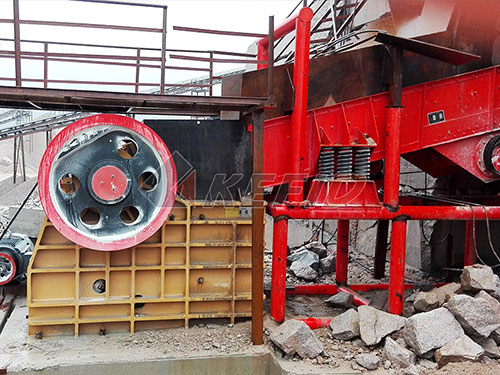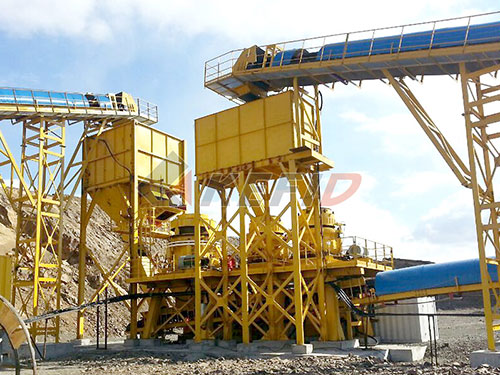Granite Quarry Side Crusher Image
The Granite Quarry Side Crusher: A Portrait of Industrial Might and Geological Transformation
Captured within a single frame depicting a granite quarry side crusher lies a compelling narrative of raw power, meticulous engineering, and humanity's enduring quest to shape the very bones of our planet. This image is far more than just industrial documentation; it is a visual testament to the critical, often unseen processes that build our modern world.
The Scene Unpacked: Imagine the rugged landscape – vast expanses of exposed bedrock, sheer rock faces bearing the scars of blasting and cutting, dust hanging faintly in the air. Dominating one corner stands the side crusher, also known as a primary or jaw crusher. Its imposing structure is unmistakable: massive steel jaws, heavy-duty bearings, and robust hydraulic systems designed for relentless punishment. Often positioned near the initial extraction point or haul roads within the quarry pit itself ("side" implying its location relative to other operations), its purpose is fundamental: size reduction.
The Crucial First Break: Granite extracted from the quarry face arrives at this machine as colossal boulders – sometimes weighing many tons and measuring several feet across. These are far too large for efficient transport or further processing into usable aggregate (crushed stone). The side crusher’s powerful jaws exert immense pressure, compressing these titanic rocks until they fracture violently into smaller, more manageable pieces – typically reducing them to chunks roughly 6-12 inches in diameter.
Engineering Meets Geology: The image speaks volumes about engineering prowess overcoming geological resistance.
Scale: The sheer size of the machine relative to any visible operators or nearby equipment underscores its brute force capacity.
Material: The contrast between the gleaming (or dust-coated) steel of the crusher and the ancient, immutable granite highlights this clash – technology mastering nature.
Functionality: Visible components like feeder chutes directing boulders into its maw, conveyors waiting below to carry away crushed material, and hydraulic rams hint at a complex system operating under extreme stress.

Beyond Breaking Rock: Significance in Context
1. Foundation of Construction: This primary crushing stage is indispensable for producing construction aggregates – essential components in concrete foundations, asphalt roads, railway ballast, drainage systems, and countless building projects.
2. Economic Engine: Quarries are vital economic hubs providing local employment and essential materials for regional development.

3. Landscape Transformation: The image starkly illustrates humanity's capacity to reshape landscapes


